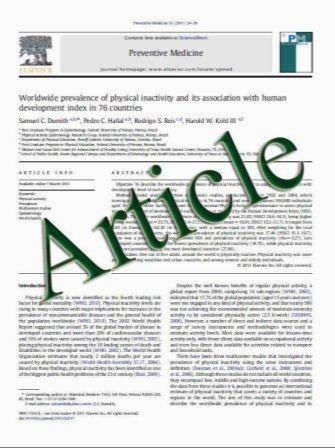Phase I/II study of sorafenib with anastrozole in patients with hormone receptor positive aromatase inhibitor resistant metastatic breast cancer
- نوع فایل : کتاب
- زبان : انگلیسی
- مؤلف : Claudine Isaacs Pia Herbolsheimer Minetta C. Liu Mary Wilkinson Yvonne Ottaviano Gina G. Chung Robert Warren Jennifer Eng-Wong Philip C
- چاپ و سال / کشور: 2010
Description
We evaluated the use of sorafenib to overcome resistance to aromatase inhibitors (AIs) in patients with metastatic breast cancer who had disease recurrence or progression while on AIs. We performed a multi-institution phase I/II study of sorafenib and anastrozole 1 mg daily in 35 postmenopausal females with hormone receptor positive metastatic breast cancer resistant to AIs. Primary objectives were to determine the dose of sorafenib in conjunction with anastrozole and the clinical benefit rate (CBR) (complete response [CR], partial response [PR], or stable disease [SD] C 24 weeks). Secondary objectives were to determine toxicity and to evaluate if response was associated with change in number of circulating endothelial cells or circulating endothelial progenitor cells. Based on the phase I portion, sorafenib 400 mg twice daily was selected as the phase II dose. Among 35 patients, 7 had SD C 24 weeks, 1 had PR C 24 weeks, and 14 had progressive disease (PD) B 24 weeks, corresponding to a CBR of 23%. The most common adverse events (all; Grade 3/4) were fatigue (66%; 17%), diarrhea (63%; 6%), nausea (60%; 9%), and hand-foot syndrome (57%; 34%). Dose reduction occurred in 77% of the patients and 31% came off study due to toxicity. The combination of sorafenib and anastrozole demonstrated a 23% CBR in patients with hormone receptor positive, AI-resistant metastatic breast cancer, which may be attributable to the restoration of sensitivity to AIs. Toxicities occurred frequently resulting in a high rate of discontinuation.
Breast Cancer Res Treat (2011) 125:137–143 DOI 10.1007/s10549-010-1226-z Received: 5 October 2010 / Accepted: 11 October 2010 / Published online: 26 October 2010 Springer Science+Business Media, LLC. 2010


